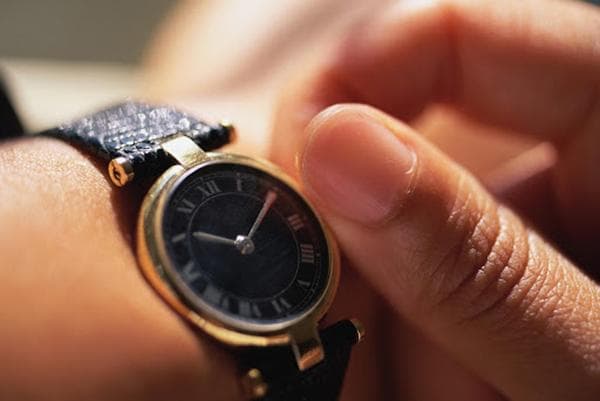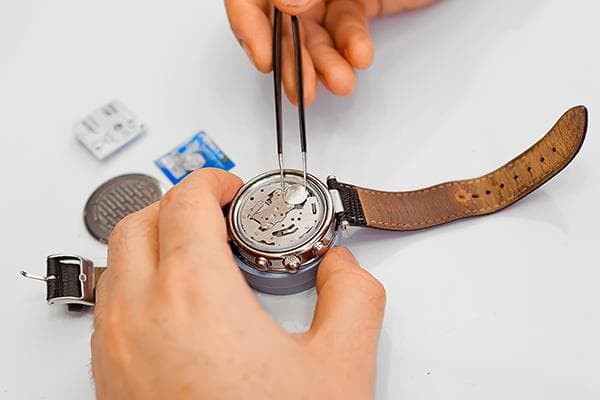How to replace the battery in a clock – wall, table, wrist?
Everyone needs to change their watch battery from time to time. Only mechanical watches do not require batteries; they should be wound periodically. Changing batteries in wall-mounted and desktop models is not difficult, but with a wristwatch you will have to tinker.

Replacing batteries in wall and table clocks
Changing the batteries in a table or wall clock is easy. As a rule, such models use AA (finger) or AAA (pinky) batteries. Less commonly used are coin batteries - power sources in the form of disks.
First of all, you need to look at exactly what batteries are installed in the watch and how many there are. To do this, open the battery compartment cover, which is located on the back wall of the device. Most often, the cover is installed on a latch; it must be moved in the direction indicated by the arrow. In some models, the cover is secured with screws - you will have to unscrew them using a small screwdriver.
Now you can remove the old batteries. To do this, carefully pick up the battery with your fingers and remove it from the compartment. Using a cotton swab, carefully clean the contacts in the battery compartment. Make sure the contacts are completely dry.
Before inserting a new battery, you need to pay attention to the polarity. There are “+” and “-” markings on the battery case and on the watch case. You need to install the batteries so that these designations match.Now all that remains is to put the battery compartment cover in place.
Replacing batteries in wristwatches
It is somewhat more difficult to replace batteries in a wristwatch. To perform this operation, you can contact a watch workshop, but you can do everything yourself.
How do you know when it's time to change the battery?
After purchasing a new quartz watch with a factory-installed battery, you can expect the battery to last 2-3 years. Expensive models last 5-6 years without replacement, while Casio watches can operate with a factory battery for 10 years or more.
If the battery has already been changed, its service life depends on many factors:
- battery quality;
- level of energy consumption by the mechanism;
- frequency of use of additional functions - backlight, alarm clock;
- air temperature (batteries discharge faster in cold weather).
Some Japanese and Swiss watches have an EOL function. When the battery is low, the watch “warns” the owner. The second hand begins to move at intervals of 2 or 4 seconds (depending on the model). In this mode, the mechanism can work for at least another 10–15 days before it finally stops. During this period, the owner must decide whether he will change the battery himself or contact a workshop.
What to do at the first stage?
Before you begin to remove the cover and otherwise interfere with the operation of the clock mechanism, you need to make sure that:
- The watch is not under warranty. If the warranty period has not expired, then you should not disassemble the device yourself; you should contact a service center, where they will replace it free of charge;
- The problem is with the battery. A watch can stop working for a variety of reasons.If the battery has been changed recently, then there may be a breakdown that requires professional attention to fix.
You should not put off replacing batteries for too long. A faulty battery can leak and ruin the entire mechanism.
Selecting a battery and tool
The battery must be of high quality. You should not buy cheap models that will last a couple of months. The new battery must match the old one in size and capacity. The easiest way is to remove the old battery and take it to the store to find an analogue.
A watchmaker has a whole arsenal of special tools. But rarely do anyone have clock screwdrivers at home. In this case, you can use improvised means. This could be a small knife with a thin blade, a nail file, or a razor blade. You can buy a screwdriver for repairing glasses; it is perfect for opening the watch cover.
Sequencing
First you need to prepare your workplace. A table or other work surface should be thoroughly wiped from dust and covered with a light, lint-free cloth or a sheet of white thick paper. This “backing” will protect the dial glass from scratches. It is recommended to choose a light color to make it easier to find an accidentally dropped screw or other small part.
The watch must be thoroughly cleaned from the inside to prevent dust from entering the mechanism. It is better to remove the strap while working. This completes the preparatory stage.
Next you need to remove the cover. It can be secured with screws or a latch.
- The screws are unscrewed using a screwdriver: first you need to loosen the screws located diagonally, then unscrew them in any order.
- To remove the latch cover, you need to inspect the housing. Typically, the bracelet fastening lug has a barely noticeable gap formed by the protrusion of the case or cover. You need to carefully pry it off with a screwdriver and remove the cover.
In waterproof models, the lids are screwed on. You need to remove it using a special key, but such a tool is unlikely to be at the disposal of a home craftsman. You can replace it with a caliper. The jaws of the tool are spread to the width of the lid and fixed tightly. Then carefully turn the tool counterclockwise.
After removing the cover, you need to replace the battery. This requires:
- slightly loosen the screw of the movable bar that secures the battery in the socket;
- use a screwdriver to move the movable fixing bar to the side (after moving the bar, the battery will rise due to the spring installed under it);
- Use tweezers to carefully remove the old battery and install a new one;
- Press the installed element with the bar and secure it by tightening the screw.
After replacing, all that remains is to put the back cover back in place and put the watch strap back on.
Thus, replacing a watch battery is not a difficult task, but requires care. And when working with wrist models, special tools are needed.

